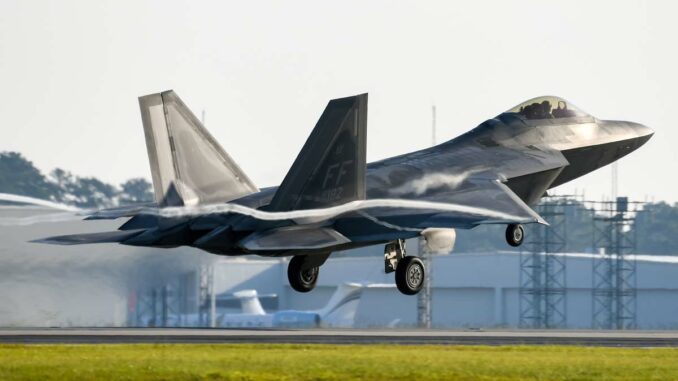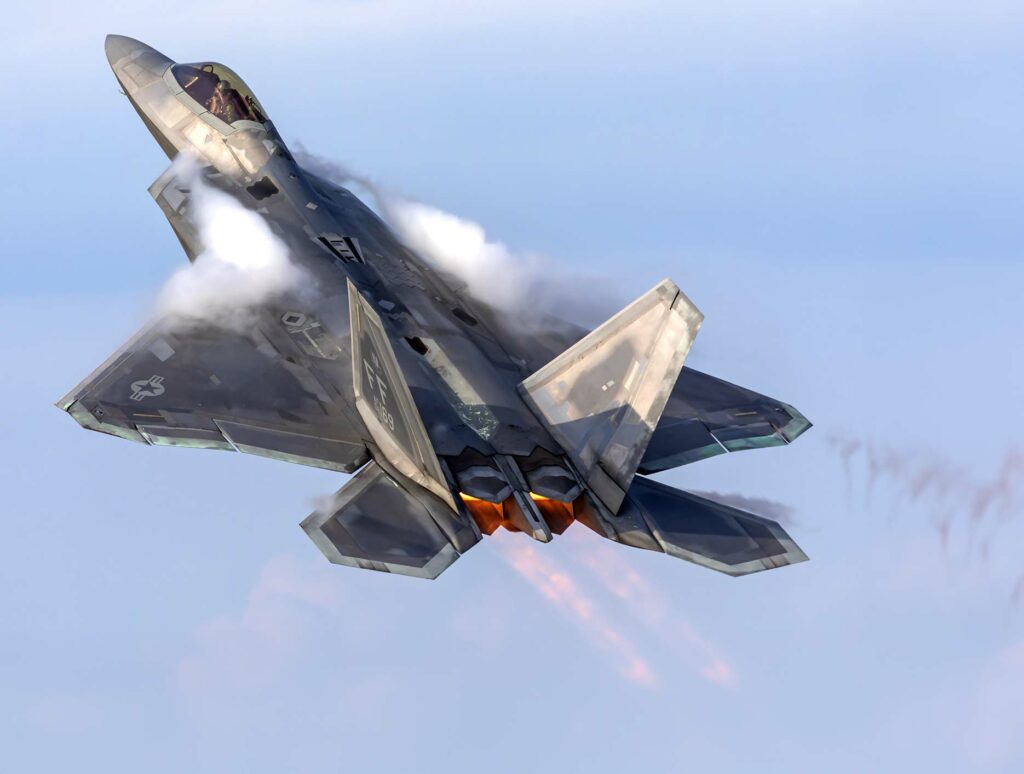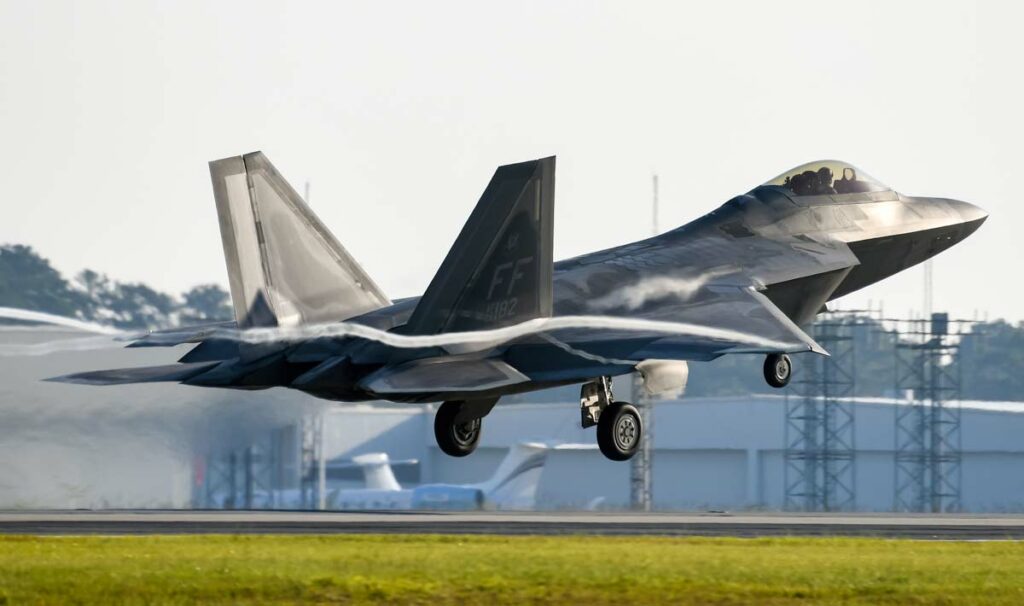
Explore the strategic, technological and legislative reasons that prevent the United States from selling the F-22 Raptor, a symbol of its air dominance.
Since first entering service in 2005, the F-22 Raptor has been one of the most technologically advanced and capable fighters in the U.S. arsenal. Designed to establish and maintain air superiority, the F-22 has become the emblem of U.S. air dominance. But unlike other high-tech military equipment, this fighter is not sold to foreign countries. In this article, we’ll explore why, highlighting its performance, technology and the strategic advantages it offers the United States.

Incomparable performance
The F-22’s performance sets it apart from all other fighter jets. Its extended supersonic flight (supercruise) capability enables it to fly faster than the speed of sound without using afterburner, offering increased range and persistence on the battlefield. This capability is crucial for reacting quickly to emerging threats and ensuring airspace dominance.
Its maneuverability is also unrivalled, thanks to its thrust vector engines, enabling the F-22 to perform maneuvers that most other fighters simply cannot.
Cutting-edge technology
The F-22 is a showcase of the most advanced defense technology. Its stealth, which minimizes its visibility to enemy radars, is unrivalled. Design, radar-absorbing materials and advanced exhaust cooling technology all contribute to its low radar profile.
What’s more, its advanced avionics systems, such as the AN/APG-77 radar, enable it to detect, track and engage targets at much greater distances than its competitors. This offers an essential “first shot, first impact” advantage, i.e. the ability to engage and destroy a target before it is even aware of the F-22’s presence.
Strategic advantages for the United States
Air dominance has always been a pillar of U.S. defense strategy. Possessing technology that potential adversaries can neither match nor surpass guarantees a head start on the battlefield. By refusing to sell the F-22 to foreign countries, the U.S. retains this exclusive advantage.
Selling such technology to foreign countries, even allies, always presents a risk. Technologies could be copied, adapted or even reversed by adversaries. By keeping the F-22 exclusive to its arsenal, the United States ensures that its unique capabilities remain confidential and protected.

Laws and regulations
The decision not to export the F-22 is also enshrined in law. In 1998, the US Congress passed the Obey Amendment, specifically prohibiting the sale of the F-22 to any foreign country. This amendment reflects the concern that the sale of the F-22 would compromise U.S. technological and operational superiority.
The F-22 Raptor is much more than just a fighter: it embodies the convergence of performance, technology and strategy. By not selling it abroad, the U.S. is preserving its air advantage, ensuring that it remains one step ahead of any potential adversary. As the world evolves and threats change, the F-22 remains a powerful symbol of America’s commitment to maintaining peace and security through air superiority.